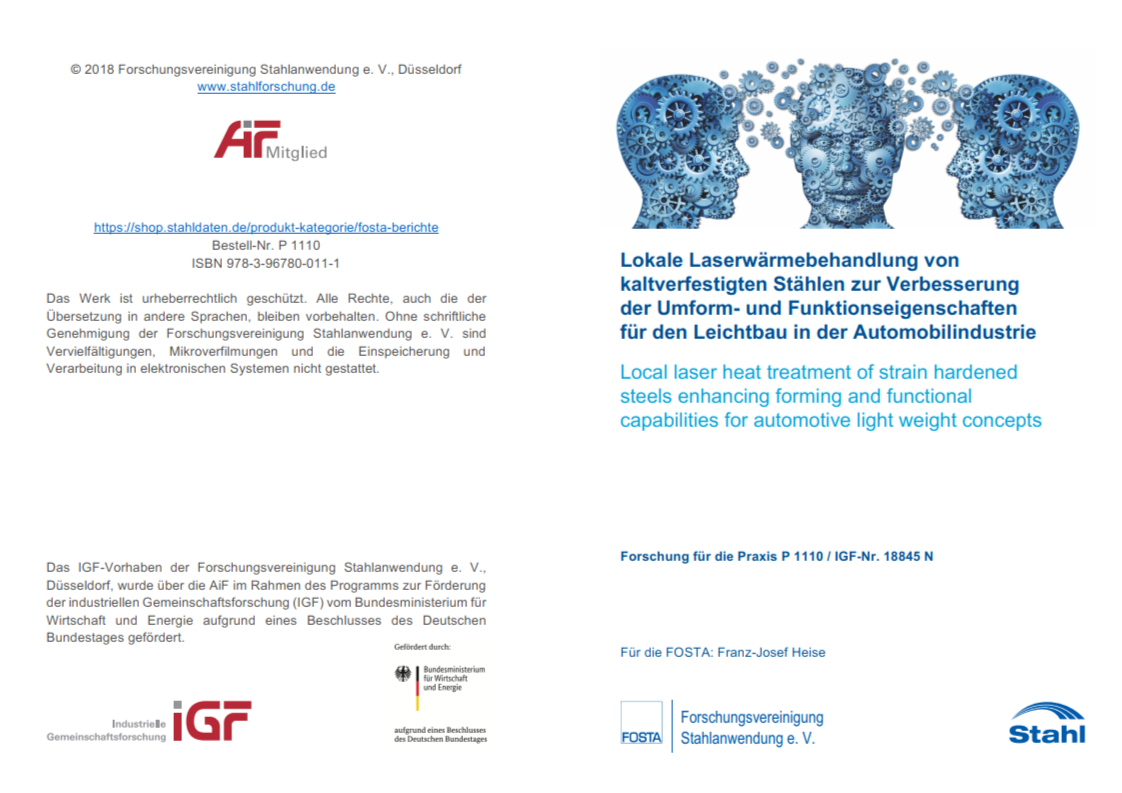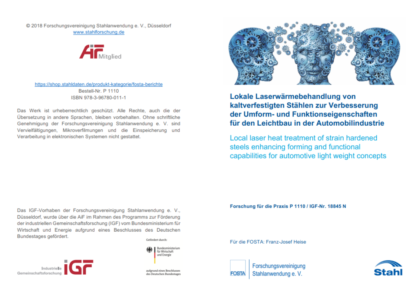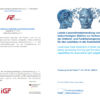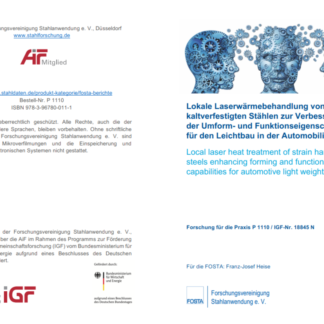Description
P 1110 – Local laser heat treatment of strain hardened steels enhancing forming and functional capabilities for automotive light weight concepts
The overall research objective of the project was to combine cold rolling and local laser heat treatment in steel blanks to achieve tailored properties in terms of formability and crash behavior for the following forming process as well as subsequent use in the automobile. To investigate this approach, a cost-efficient ferritic steel, the micro-alloyed S550MC, and an established steel with high application relevance, the dual-phase steel HCT780X, were selected.
First, the temperature ranges in which relevant softening mechanisms occur depending on the degree of rolling were determined. For this purpose, short-term heat treatments based on the laser softening were carried out in a deformation dilatometer. The resulting mechanical properties were then tested at room temperature in a tensile test. The results serve on the one hand as a target value for the process development of the local laser heat treatment and on the other hand as a basis for the material data required in the simulation. In deep drawing simulations of a strain hardened cross-die, softening strategies for maximizing the drawing depth were developed, while in crash simulations of a hexagonal hollow profile softening strategies for increasing the energy absorption were determined. The most promising strategies were verified in real tests and the methodology developed was validated using a sample component, a b-pillar.
The results of this interdisciplinary cooperation prove that the design and optimization of local heat treatment areas is possible in principle by means of simulation. To increase formability, the most effective method is to work harden potential failure areas and soften surrounding areas to allow reflow. The improvement of crash behavior can be demonstrated in drop tower tests: Crash boxes produced with this process combination have an up to 28 % shorter deformation path for the same energy absorption compared to a conventional crash box. The production of the sample component shows that process limitations can also be predicted with the aid of simulation. When integrating local laser heat treatment into the sheet metal forming production chain, additional consideration must be given to leveling to minimize the resulting distortion and the removal of the laser-induced oxide layer prior to zinc coating to ensure corrosion resistance. To increase the feed rate of the laser irradiation, a scanner and a special optics with adapted beam profile were tested. By combining cold rolling to increase strength and laser heat treatment for local softening, new lightweight design and crash safety potentials could be demonstrated.
According to the results, the potential of the investigated process combination can be rated as high.
Published in:
2018
Authors:
Prof. Dipl.-Ing. G. Hhirt, Prof. Dr. rer. Nat. R. Poprawe




